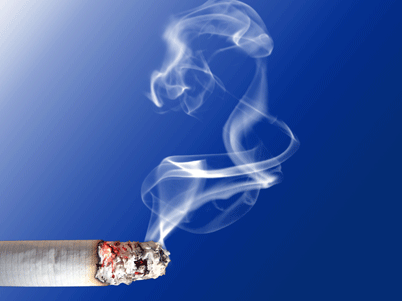Tobacco Odor Removal
by Nick Gromicko, CMI®
Tobacco smoke creates an odor that is notorious for its ability to saturate living spaces and persist long after its source is gone. Inspectors may be asked by clients who recently purchased a smoke-infused home, or by sellers before their house goes on the market, about how to remedy the situation.

Facts About Tobacco Smoke and its Residue
- Smoke particles can be as small as .001% of the width of a human hair, which allows them to penetrate almost any part of a house. Tobacco smoke can easily circulate through a building’s ventilation system or come up through apartment floors. Tenant/tenant and tenant/landlord disputes commonly arise when smoke odors penetrate adjacent housing units.
- It is not clear whether tobacco smoke odor is dangerous or if it is merely a nuisance. While tobacco smoke is a known carcinogen, little is known about the health effects of the particles that are left in the air after you can no longer see the smoke. The American Cancer Society states of cigarette odors, “Though unknown, the cancer-causing effects would likely be very small compared with direct secondhand smoke exposure, such as living in a household that has a smoker.”
Odor-Absorbing Materials
The following materials are believed to be capable of absorbing or neutralizing tobacco smoke odors, at least temporarily:
- vinegar. Place a bowl of vinegar in each affected room overnight.
- citrus. Leave a large amount of citrus peels in your home for several days or until they have become desiccated.
- baking soda. Sprinkle baking soda over the smoke-affected area and let it sit for a few hours before vacuuming it up. Be sure to test the baking soda on a small part of the surface to ensure that the surface or fabric doesn't react unfavorably to the baking soda.
- coffee grounds. Pour coffee grounds into several coffee filters and tie them closed,
 leaving them in affected areas.
leaving them in affected areas. - charcoal. As you would with vinegar, place charcoal into bowls and leave them in smoke-infused rooms overnight.
Removal Strategies for Smoke Odor
- Open all windows and turn on fans. Ventilation is probably the best way to remove any odor.
- Clean light bulbs. Just as some scent-diffusers rely on heat from light bulbs to disperse the aroma of the scented oil, it's possible that the oily residue from nicotine and other cigarette byproducts is dispersed throughout the living area the same way. Anecdotal reports suggest that light bulbs attract smoke residue. It has also been claimed that bulbs will release smoke odors when they are turned on. Perhaps replacing incandescent bulbs with higher-efficiency bulbs that do not get as hot would help alleviate this problem.
- Thoroughly clean all hard surfaces, preferably with cleaners that contain ammonia, although woodwork requires cleaners that are not as acidic.
- Surfaces may be painted to trap odor, although it may be possible for odors to gradually seep through paint barriers.
- Remove carpeting, as it is nearly impossible to remove smoke particles from carpet. Thoroughly scrub the flooring beneath before installing new carpet. If the carpet cannot be replaced, have it professionally cleaned.
- Soak blinds in a bathtub full of all-purpose cleaner, scrub them thoroughly, and hang them to dry.
- Send curtains out to be professionally cleaned or replace them.
- Purchase a chemical sponge to remove smoke residue from lampshades, books and other materials.
- Use an ozone generator. Ozone, as it has three oxygen atoms, is highly unstable and will oxidize easily. When it is introduced into an area, ozone attaches itself to the odor molecules and oxidizes them into their basic elements--carbon dioxide and hydrogen, which have no odor. Beware that ozone is dangerous and ozone generators should only be used in unoccupied spaces. Be sure to read our article on the subject before purchasing an ozone generator.
- Use a HEPA filter.
- Burn “smoker candles.” Candles that contain enzymes to help neutralize and remove smoke odors are widely available. They may also be used to remove cooking and pet odors.
- Replace all heating and air filters regularly, as they tend to harbor cigarette odors and other irritants.
In summary, there are a variety of ways to remove cigarette smoke odors from buildings.

